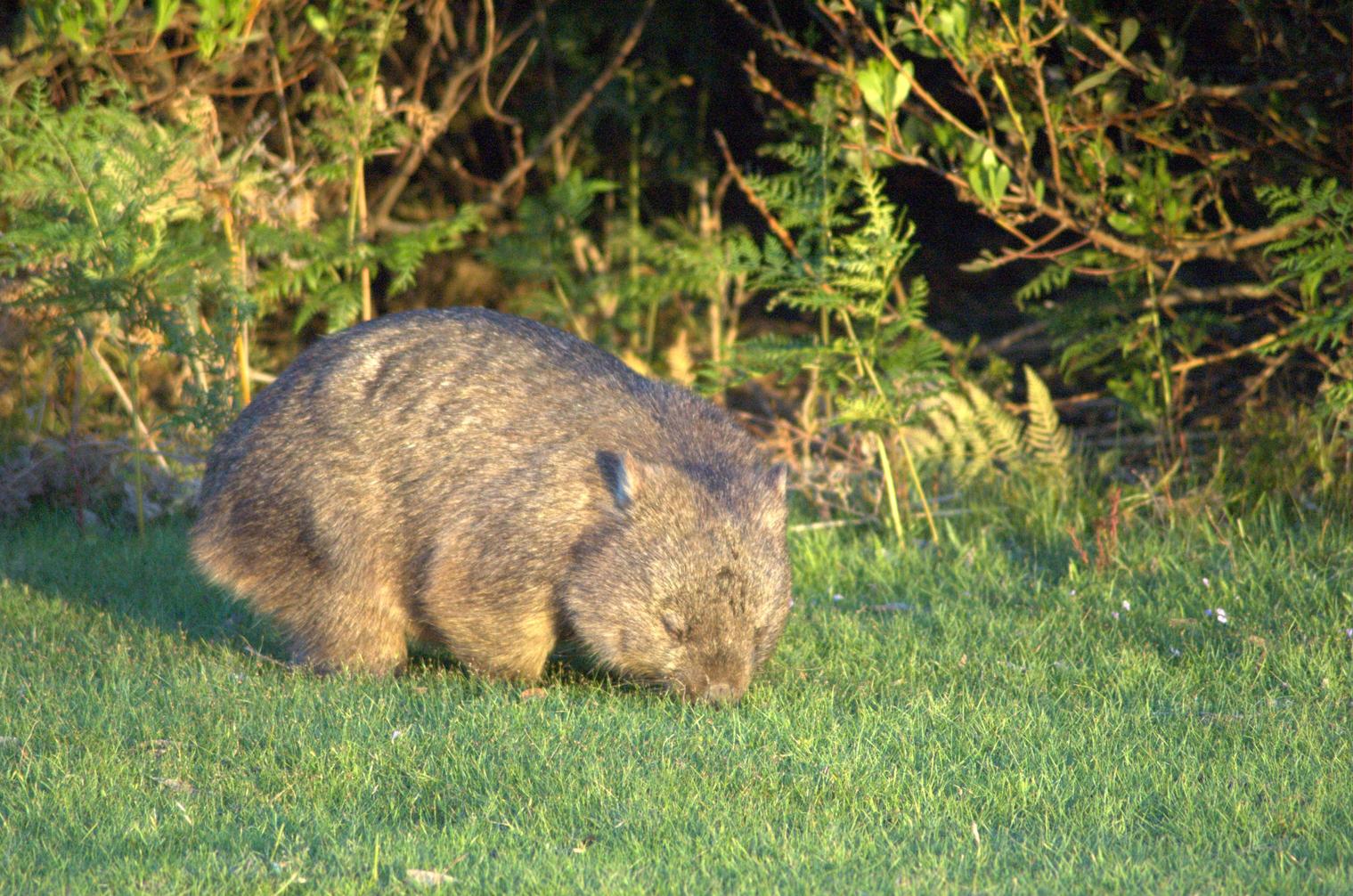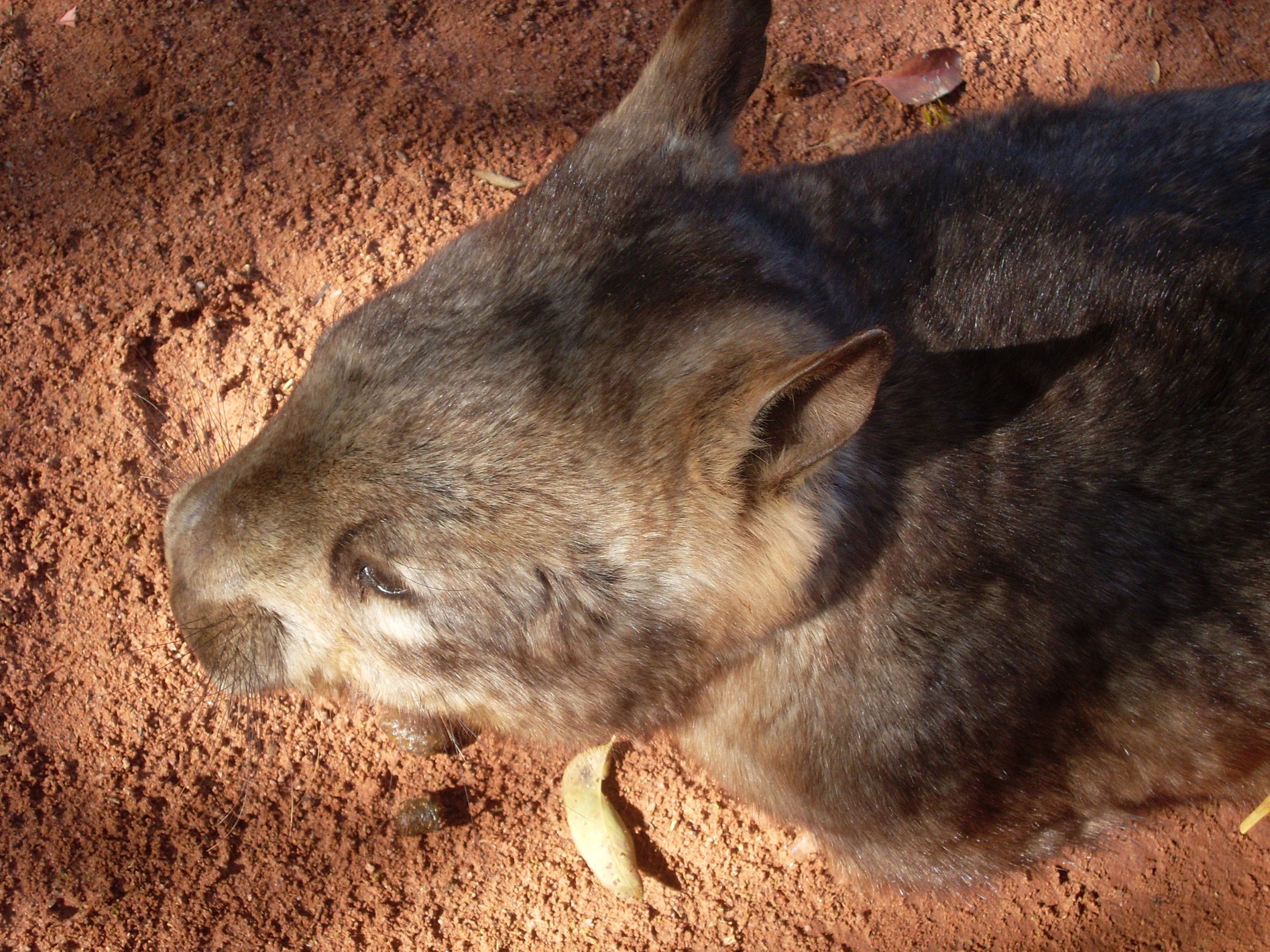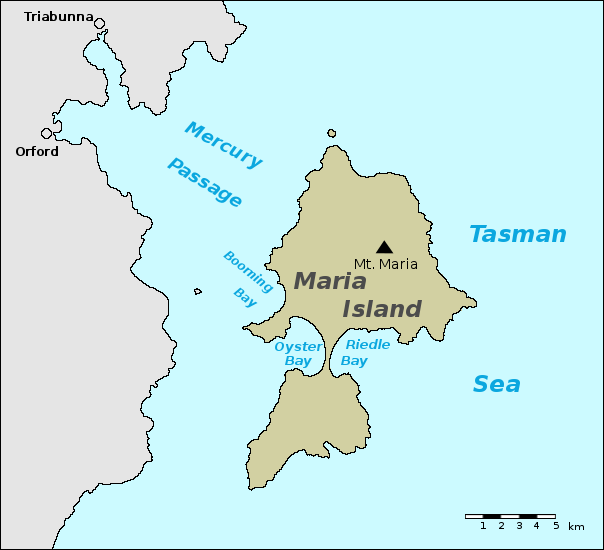|
Wombats
Wombats are short-legged, muscular quadrupedal marsupials of the family Vombatidae that are native to Australia. Living species are about in length with small, stubby tails and weigh between . They are adaptable and habitat tolerant, and are found in forested, mountainous, and heathland areas of southern and eastern Australia, including Tasmania, as well as an isolated patch of about in Epping Forest National Park in central Queensland. Etymology The name "wombat" comes from the now nearly extinct Dharug language spoken by the aboriginal Dharug people, who originally inhabited the Sydney area. It was first recorded in January 1798, when John Price and James Wilson, Europeans who had adopted aboriginal ways, visited the area of what is now Bargo, New South Wales. Price wrote: "We saw several sorts of dung of different animals, one of which Wilson called a 'Whom-batt', which is an animal about high, with short legs and a thick body with a large head, round ears, and very sm ... [...More Info...] [...Related Items...] OR: [Wikipedia] [Google] [Baidu] |
Vombatus Ursinus
The common wombat (''Vombatus ursinus''), also known as the bare-nosed wombat, is a marsupial, one of three extant species of wombats and the only one in the genus ''Vombatus''. It has three subspecies: ''Vombatus ursinus hirsutus'', found on the Australian mainland; ''Vombatus ursinus tasmaniensis'' (Tasmanian wombat), found in Tasmania; and ''Vombatus ursinus ursinus'' (Bass Strait wombat), found on Flinders Island and Maria Island in the Bass Strait. The mainland subspecies is the largest of the three, with its largest specimens measuring up to and . The common wombat is herbivorous, mainly nocturnal, and lives in burrows. Being a marsupial, its joeys inhabit a pouch on the mother for around five months after birth. Taxonomy The common wombat was first described by George Shaw (biologist), George Shaw in 1800. There are three extant subspecies of the common wombat, confirmed in 2019: *Bass Strait (common) wombat, also written "Common Wombat (Bass Strait)" Text may have ... [...More Info...] [...Related Items...] OR: [Wikipedia] [Google] [Baidu] |
Lasiorhinus Latifrons
The southern hairy-nosed wombat (''Lasiorhinus latifrons'') is one of three extant species of wombats. It is found in scattered areas of semiarid scrub and mallee (biogeographic region), mallee from the eastern Nullarbor Plain to the New South Wales border area. It is the smallest of all three wombat species. The young often do not survive dry seasons. It is the state animal of South Australia. Among the oldest southern hairy-nosed wombats ever documented were a male and a female from Brookfield Zoo just outside Chicago. Their names were Carver, who lived to be 34, and his mother, Vicky, who lived to be 24. In South Australia in 2010, a tame wombat named Wally was also reported as having reached the age of 34. Hamlet, a wombat at the Toronto Zoo, similarly died at age 34. Taxonomy English naturalist Richard Owen described the species in 1845. There are three Synonym (taxonomy), synonyms: * ''Phascolomys lasiorhinus'' Gould, 1863 * ''Lasiorhinus mcoyi'' Gray, 1863 * ''Phascolomy ... [...More Info...] [...Related Items...] OR: [Wikipedia] [Google] [Baidu] |
Lasiorhinus Krefftii
The northern hairy-nosed wombat (''Lasiorhinus krefftii'') or yaminon is one of three extant species of Australian marsupials known as wombats. It is one of the rarest land mammals in the world and is critically endangered. Its historical range previously extended across New South Wales, Victoria, and Queensland, and as recently as 100 years ago it was considered as having become extinct, but in the 1930s a population of about 30 individuals was discovered located in one place, a range within the Epping Forest National Park in Queensland. With the species threatened by wild dogs, the Queensland Government built a -long predator-proof fence around all wombat habitat at Epping Forest National Park in 2002. Insurance populations have since been translocated to two other locations to ensure the species survives threats such as fire, flood, or disease. In 2003, the total population consisted of 113 individuals, including only around 30 breeding females. After recording an estimat ... [...More Info...] [...Related Items...] OR: [Wikipedia] [Google] [Baidu] |
Phascolonus
''Phascolonus'' is an extinct genus of giant wombat known from the Pliocene and Pleistocene of Australia. There is only a single known species, ''Phascolonus gigas'', the largest wombat ever known to have existed, estimated to weigh as much as 200 kg (450 lb) or . It was described by Richard Owen in 1859. ''Phascolomys magnus'' is a probable junior synonym. ''P. gigas'' is distinguished from other wombats by its strap-shaped upper incisors. The cranial roof also is noticeably inwardly depressed. The species was abundant across Australia, with remains having been found in all states except Western Australia. It is suggested to have had a preference for arid and semi-arid inland habitats, with a diet consisting of a high amount of low quality vegetation. Though it likely had wide home-ranges, it probably did not stray far from fresh water sources. Abundant remains have been found in Pleistocene aged deposits from Lake Callabonna in South Australia. Unlike its living relatives, ... [...More Info...] [...Related Items...] OR: [Wikipedia] [Google] [Baidu] |
Warendja
''Warendja'' is an extinct genus of wombat. It is known from two species, ''W. encorensis'' from the Late Miocene Riversleigh site in Queensland,Brewer, P., M. Archer, S. Hand, and H. Godthelp. 2007. A new species of the wombat ''Warendja'' from late Miocene deposits at Riversleigh, northwest Queensland, Australia. ''Palaeontology'' 50:811–828. and ''W. wakefieldi'' known from the Pleistocene of South Australia, New South Wales, and Victoria. The two species are primarily distinguished by features of their enamel. It became extinct as part of the Quaternary extinction event The Late Pleistocene to the beginning of the Holocene saw the extinction of the majority of the world's megafauna, typically defined as animal species having body masses over , which resulted in a collapse in faunal density and diversity acro .... ''Warendja wakefieldi'' is estimated to have weighed about 10 kg, considerably smaller than living wombats. ''Warendja'' thought to be relatively basal ... [...More Info...] [...Related Items...] OR: [Wikipedia] [Google] [Baidu] |
Epping Forest National Park
Epping Forest is a national park in Queensland, Australia, 855 km northwest of Brisbane. The park is a scientific national park so it is not open to the public. Only scientists, rangers and volunteers may visit the park. The park lies within the Brigalow Belt North bioregion. It is within the Drummond Basin geological basin and the Belyando River water catchment area. The park was established to protect a critically endangered species of wombat, the northern hairy-nosed wombat (''Lasiorhinus krefftii''), the world’s largest burrowing herbivore. Restricted access is used to ensure Epping Forest remains very much undisturbed as it is the sole remaining natural habitat of the endangered Northern hairy-nosed wombat. The last census of the animal, undertaken in 2007, estimated there was a population of about 138 of the species. In the 1970s the population was estimated to have reached a low of somewhere between 20 and 30 wombats. Most of the park is eucalypt woodland wi ... [...More Info...] [...Related Items...] OR: [Wikipedia] [Google] [Baidu] |
Sedophascolomys
''Sedophascolomys'' is an extinct genus of wombat known from the Pliocene and Pleistocene of Australia. There is a single recognised species, ''S. medius,'' which was formerly placed in the invalid genus ''Phascolomys.'' It was found in the northeastern and eastern regions of the continent. It is estimated to be somewhat larger than extant wombats, with a body mass of . The youngest remains of the genus date to the Late Pleistocene, around 50–40,000 years ago. It is thought to be closely related to the giant wombat genera ''Phascolonus ''Phascolonus'' is an extinct genus of giant wombat known from the Pliocene and Pleistocene of Australia. There is only a single known species, ''Phascolonus gigas'', the largest wombat ever known to have existed, estimated to weigh as much as 20 ...'' and '' Ramsayia.'' References {{Vombatiformes Prehistoric vombatiforms Prehistoric mammals of Australia Prehistoric marsupial genera Pleistocene life Fossil taxa described in 1872 ... [...More Info...] [...Related Items...] OR: [Wikipedia] [Google] [Baidu] |
Ramasayia
''Ramsayia'' is an extinct genus of giant wombat, weighing around 100 kg. ''Ramsayia'' is known from two species, ''Ramsayia lemleyi'' from the Pliocene of Queensland, and ''Ramsayia magna'' from the Pliocene to Late Pleistocene of Queensland and New South Wales. The skull superficially resembles that of the giant beavers ''Castoroides'' and ''Trogontherium.'' The large premaxillary spine suggests it possessed a large fleshy nose. The shape of the skull of ''R. magna'' suggests that it did not engage in burrowing. Cladistic analysis suggests that it is closely related to the other giant wombat genera ''Phascolonus'' and ''Sedophascolomys ''Sedophascolomys'' is an extinct genus of wombat known from the Pliocene and Pleistocene of Australia. There is a single recognised species, ''S. medius,'' which was formerly placed in the invalid genus ''Phascolomys.'' It was found in the north ....'' Like other giant wombats, its size is thought to have been adaption to feeding on large ... [...More Info...] [...Related Items...] OR: [Wikipedia] [Google] [Baidu] |
Maria Island
Maria Island or wukaluwikiwayna in palawa kani is a mountainous island located in the Tasman Sea, off the east coast of Tasmania, Australia. The island is entirely occupied by the Maria Island National Park, which includes a marine area of off the island's northwest coast. The island is about in length from north to south and, at its widest, is about west to east. At its closest point, Point Lesueur, the island lies approximately off the east coast of Tasmania and is connected by ferry with Triabunna. Maria Island lies in the local government area of Glamorgan–Spring Bay in the South-east region of Tasmania. The island has had a mixed history, including two convict eras, two industrial eras, a farming era and, finally, becoming the national park that it is today. Maria Island is popular with visitors, providing an array of interests for the daytripper or overnight visitor to the island. Etymology Tasmanians pronounce the name , as did the early British settlers but ... [...More Info...] [...Related Items...] OR: [Wikipedia] [Google] [Baidu] |
Badger Creek, Victoria
Badger Creek is a suburb of Healesville in Victoria, Australia, 53 km north-east from Melbourne's central business district, located within the Shire of Yarra Ranges local government area. Badger Creek recorded a population of 1,610 at the . Badger Creek is near the Healesville Sanctuary and the former Aboriginal reserve, Coranderrk, now known as the Coranderrk Bushland. History The creek was possibly named after the wombats in the area which were often called ''badgers Badgers are medium-sized short-legged omnivores in the superfamily Musteloidea. Badgers are a polyphyletic rather than a natural taxonomic grouping, being united by their squat bodies and adaptions for fossorial activity rather than by their ...''. Other theories is that is it derived from the Woi Wurrung word badjurr, or that a horse named Badger, owned by one of the pioneering Ryrie brothers, became bogged in the creek [...More Info...] [...Related Items...] OR: [Wikipedia] [Google] [Baidu] |
Marsupial
Marsupials are a diverse group of mammals belonging to the infraclass Marsupialia. They are natively found in Australasia, Wallacea, and the Americas. One of marsupials' unique features is their reproductive strategy: the young are born in a relatively undeveloped state and then nurtured within a pouch on their mother's abdomen. Extant marsupials encompass many species, including Kangaroo, kangaroos, Koala, koalas, Opossum, opossums, Phalangeriformes, possums, Tasmanian devil, Tasmanian devils, Wombat, wombats, Wallaby, wallabies, and Bandicoot, bandicoots. Marsupials constitute a clade stemming from the last common ancestor of extant Metatheria, which encompasses all mammals more closely related to marsupials than to Placentalia, placentals. The evolutionary split between placentals and marsupials occurred 125-160 million years ago, in the Middle Jurassic-Early Cretaceous period. Presently, close to 70% of the 334 extant marsupial species are concentrated on the Australian ... [...More Info...] [...Related Items...] OR: [Wikipedia] [Google] [Baidu] |
David Hu (scientist)
David L. Hu (born circa 1979) is an American mathematician, roboticist, and biologist who is currently an associate professor at the engineering department of Georgia Tech. His research centers on animal behavior and movement, and is noted for its eccentricity. Hu was born in Rockville, Maryland, and as high school student he was a semifinalist in the Westinghouse Science Talent Search. His father was a chemist who enjoyed collecting and dissecting road kill, which inspired his son's curiosity regarding the science of living things. He received his Bachelor's degree and Ph.D. from the Massachusetts Institute of Technology. Hu is married to Dr. Jia Fan, a data scientist employed by AT&T with whom he has two children. Hu's children have inspired some of his research projects. "From a diaper change with my son, I was inspired to study urination. From watching my daughter being born, I was inspired by her long eyelashes." Hu is known for focusing on irreverent and whimsical research ... [...More Info...] [...Related Items...] OR: [Wikipedia] [Google] [Baidu] |




